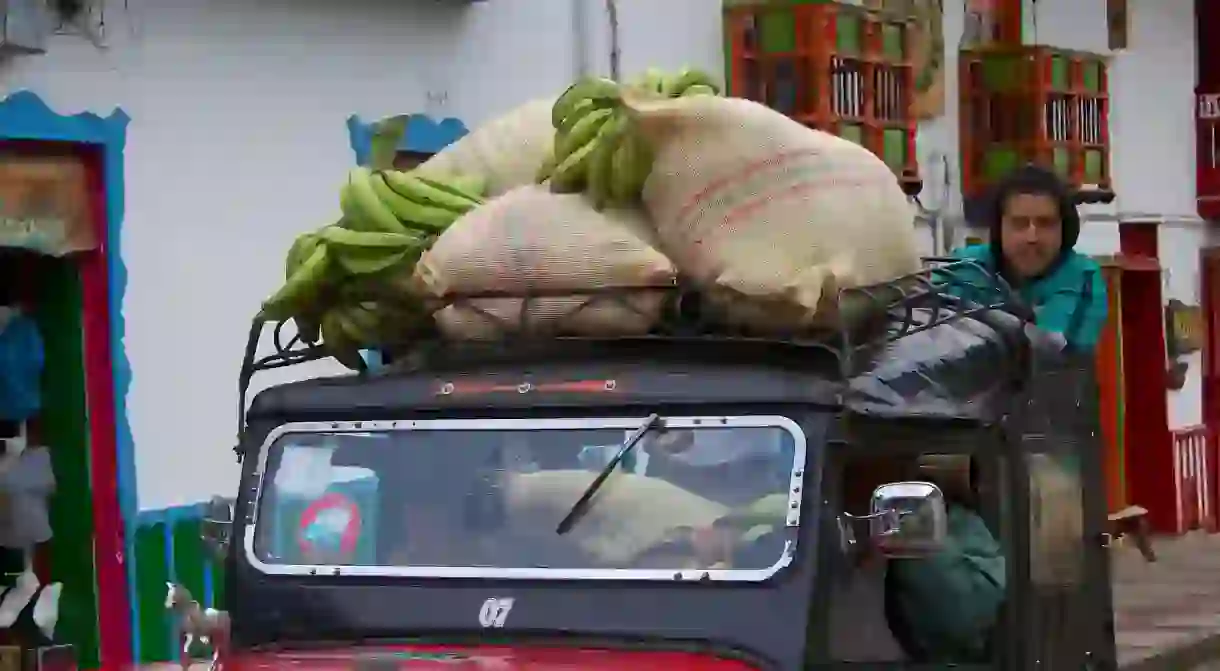Everything you Need to Know Before Visiting the Colombian Coffee Region

The Colombian Coffee Region is one of the country’s most popular tourist destinations – people from around the world flock to this beautiful part of Colombia to enjoy stunning landscapes, beautiful little towns, and, of course, world-class coffee. Here’s a complete guide to everything you need to know before you visit the Coffee Region of Colombia.
Where is the Colombian Coffee Region?
First off: where exactly is the Colombian Coffee Region? Many Colombian regions grow coffee, but only one small part of the country is designated as the Coffee Region: also known as the Coffee Triangle, it consists of the three rural departments of Caldas, Quindio, and Risaralda. The ‘Coffee Cultural Landscape’ as designated by UNESCO also includes parts of Valle del Cauca. The principal cities of the region are Manizales, Pereira, and Armenia, all of which are easily accessed by bus and plane from throughout Colombia.

What is there to do in the Colombian Coffee Region?
Now that you know exactly where the Coffee Region is, the next question is what you can actually do there? Most people visit in order to take a coffee tour and learn more about the culture of Colombian coffee – the best tours you can take include the WakeCup Experience Tour in Pijao, Hacienda Venecia near Manizales, and Finca El Ocaso in Salento. There are tours available for all levels of interest, from coffee newcomers to real experts.
However, there’s a lot more to this region than just coffee tours – many people visit this stunning part of Colombia for hiking and ecotourism. Easily the most popular hike for travellers is the full-day Cocora Valley trek from Salento: you will pass through stunning cloud-forest and farmland before arriving at a valley of the world’s tallest palm trees. Other top hiking options include the Los Nevados National Park and Nevado del Tolima Volcano. Birders will love Rio Blanco Reserve, Otun Quimbaya Forest, and the many excellent reserves in Risaralda on the border of Choco region.

Another top activity in the Coffee Region is what Colombians call puebliando (literally: small-towning) – there are hundreds of gorgeous small, traditional towns in the area, and you can easily spend weeks visiting them all. The most pretty and popular include Salento, Pijao, Genova, Marsella, Salamina, Aguadas, Filandia and many more.
Where to stay in the Coffee Region
As one of the country’s top tourism destinations, the Coffee Region is home to a wealth of hotel and hostel options to suit every budget – far too many, in fact, to go into real specifics here. Popular traveller towns like Salento and Filandia have good backpacker hostels and boutique hotels, while all of the pretty small towns count on at least one nice hotel.
A real highlight is to stay on an authentic coffee farm: Hacienda Venecia near Manizales and Finca El Ocaso near Salento are especially popular options, and coffee enthusiasts will want to make time for a night or two at Panorama Cafe Hostel in Buenavista: a lovely, off-the-beaten-track hostel themed around coffee.

Know before you go
The most important thing to bring to the Coffee Region is a good range of clothes for all climates: while it can be hot and warm by day, it can often rain unexpectedly, and the nights can actually be quite chilly, especially near the mountains. Bring layers with this in mind, as well as good outdoor clothing: the hikes will require decent boots or shoes, and coffee farms can be dirty, muddy places, so bring clothing that isn’t too important to you.
In terms of high and low-seasons, it’s best to avoid Colombian holiday weekends and the two week period over Christmas and New Year, especially in top tourist destinations like Salento. The number of tourists will increase dramatically over these periods, and prices will also increase. In terms of climate, the driest period of the year is roughly between November and March, and from July to early September (although be aware that the rainfall is high in this mountainous region year-round, so you can never be 100% sure about the forecast).













